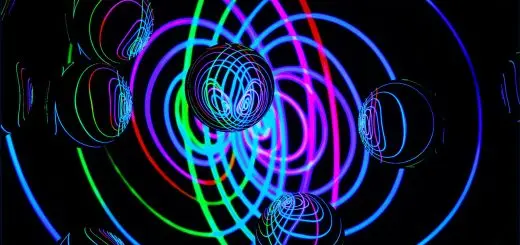Green Architecture: Sustainable Building Design

Looking for more amazing products? Check out our online store and explore our collection here! Happy shopping!
Before diving in, please note: This post is for informational purposes only. If you’d like to know more about how we approach topics, feel free to check out our friendly Disclaimer Page.
Hey there, amazing readers! 
We’re committed to delivering quality posts, and your support (even just sticking around despite the ads) means everything to us. So, bear with us, and thanks for helping us keep the good vibes rolling. Now, on to the fun stuff!
TRANSLATE BUTTON AT THE END OF THE ARTICLE
Introduction to Green Architecture
Green architecture, also known as sustainable building design, focuses on creating structures that are environmentally responsible and resource-efficient throughout their lifecycle.
This approach seeks to minimize the ecological footprint of buildings by utilizing renewable energy sources, eco-friendly materials, and energy-efficient design strategies.
Green architecture aims to promote a healthy and sustainable environment for both occupants and the planet.
By incorporating principles of sustainability into the design process, architects can reduce energy consumption, conserve water, improve indoor air quality, and minimize waste.
This article explores the benefits, principles, and key elements of green architecture, as well as case studies of successful green buildings and future trends in sustainable design.
Benefits of Sustainable Building Design
Green architecture offers a myriad of benefits, both for the environment and building occupants.
Some of the key advantages include:
Reduced energy consumption: Green buildings are designed to be energy-efficient, resulting in lower utility bills and decreased greenhouse gas emissions.
Improved indoor air quality: By utilizing eco-friendly materials and incorporating ventilation systems, green buildings provide healthier indoor environments for occupants.
Water conservation: Sustainable buildings integrate water-saving fixtures and systems to reduce water consumption and promote water efficiency.
Enhanced occupant comfort: Green architecture focuses on creating spaces that are comfortable, well-lit, and aesthetically pleasing, leading to improved occupant satisfaction and productivity.
Reduced environmental impact: Sustainable building design minimizes waste generation, pollution, and resource depletion, contributing to a healthier planet for future generations.
Principles of Green Architecture
The principles of green architecture serve as a guiding framework for designing sustainable buildings.
These principles include:
Passive design strategies: Green buildings utilize passive design techniques such as orientation, shading, and natural ventilation to minimize energy use and optimize comfort.
Energy efficiency: Sustainable buildings incorporate energy-efficient systems and technologies, such as LED lighting, high-performance insulation, and smart thermostats, to reduce energy consumption.
Material selection: Green architecture prioritizes the use of eco-friendly materials, such as recycled content, rapidly renewable resources, and low-emission products, to minimize environmental impact.
Site planning: Sustainable building design considers the site context, natural features, and landscape to maximize resource efficiency and minimize environmental disruption.
Lifecycle assessment: Green architects assess the environmental impact of a building throughout its lifecycle, from construction and operation to renovation and demolition, to ensure sustainability.
Incorporating Renewable Energy Sources
One of the key elements of green architecture is the integration of renewable energy sources to power buildings sustainably.
Some common renewable energy technologies used in green buildings include:
Solar panels: Photovoltaic panels convert sunlight into electricity, providing a clean and renewable source of energy for lighting, heating, and cooling.
Wind turbines: Wind turbines harness wind energy to generate electricity, offering an alternative to grid power and reducing reliance on fossil fuels.
Geothermal systems: Geothermal heat pumps use the earth’s natural heat to provide heating and cooling for buildings, increasing energy efficiency and reducing carbon emissions.
Biomass boilers: Biomass boilers burn organic materials such as wood pellets or agricultural waste to produce heat, offering a sustainable and carbon-neutral heating solution.
Utilizing Eco-friendly Materials
Green architecture emphasizes the use of eco-friendly materials that are sustainable, non-toxic, and resource-efficient.
Some examples of eco-friendly materials commonly used in sustainable building design include:
Recycled content: Materials made from recycled content, such as recycled steel, glass, or plastic, help conserve natural resources and reduce waste.
Bamboo: Bamboo is a rapidly renewable resource that can be used for flooring, cabinetry, and structural elements, offering a sustainable alternative to traditional hardwoods.
Cork: Cork is a renewable material harvested from the bark of cork oak trees, making it an eco-friendly option for flooring, insulation, and wall coverings.
Straw bale: Straw bales are a natural and insulating material that can be used for walls, roofs, and foundations, providing thermal comfort and energy efficiency.
Designing for Energy Efficiency
Energy efficiency is a core aspect of green architecture, focusing on reducing energy consumption and minimizing environmental impact.
Some strategies for designing energy-efficient buildings include:
Passive solar design: Orienting buildings to maximize natural light and heat gain, reducing the need for artificial lighting and heating.
High-performance insulation: Using insulation materials with high R-values to prevent heat loss and gain, improving thermal comfort and reducing energy use.
Energy-efficient lighting: Installing LED or CFL light fixtures that consume less energy and last longer than traditional incandescent bulbs, reducing electricity consumption.
Smart building controls: Implementing automated systems for lighting, heating, and cooling to optimize energy use and reduce waste.
Enhancing Indoor Air Quality
Green architecture places a strong emphasis on improving indoor air quality to create healthy and comfortable living spaces.
Some strategies for enhancing indoor air quality in buildings include:
Ventilation systems: Green buildings are equipped with mechanical ventilation systems that bring in fresh outdoor air and expel stale indoor air, reducing pollutants and allergens.
Low-emission materials: Using materials with low VOC (volatile organic compound) emissions, such as paints, adhesives, and furniture, to minimize indoor air pollution and promote respiratory health.
Air filtration: Installing high-efficiency air filters in HVAC systems to capture dust, pollen, and other airborne particles, improving indoor air quality and occupant health.
Daylighting: Maximizing natural light through windows, skylights, and light shelves to reduce the need for artificial lighting and create a bright and inviting indoor environment.
Integrating Water Conservation Systems
Water conservation is a key aspect of green architecture, focusing on reducing water consumption and promoting water efficiency in buildings.
Some strategies for integrating water conservation systems in sustainable design include:
Low-flow fixtures: Installing water-saving fixtures such as low-flow toilets, faucets, and showerheads to reduce water usage and minimize wastewater generation.
Rainwater harvesting: Collecting rainwater from rooftops and storing it in cisterns for irrigation, landscaping, and toilet flushing, reducing the demand for potable water.
Greywater recycling: Treating and recycling greywater from sinks, showers, and laundry for non-potable uses such as toilet flushing and irrigation, conserving freshwater resources.
Drought-resistant landscaping: Planting native and drought-resistant vegetation that requires minimal watering and maintenance, reducing water consumption and promoting biodiversity.
Green Roof and Wall Systems
Green roofs and walls are innovative elements of green architecture that offer numerous benefits for buildings and the environment.
Some advantages of green roof and wall systems include:
Stormwater management: Green roofs and walls absorb and filter rainwater, reducing stormwater runoff and mitigating flooding in urban areas.
Insulation: Green roofs and walls provide natural insulation, reducing heat loss in winter and heat gain in summer, improving energy efficiency and thermal comfort.
Biodiversity: Green roofs and walls create habitat for birds, insects, and plants, promoting urban biodiversity and enhancing ecological resilience.
Aesthetics: Green roofs and walls add visual interest and natural beauty to buildings, enhancing the overall aesthetics of the built environment and improving quality of life for occupants.
Importance of Daylighting in Design
Daylighting is a critical aspect of green architecture that focuses on maximizing natural light in buildings to reduce energy consumption and enhance occupant well-being.
Some benefits of daylighting in design include:
Energy savings: Daylighting reduces the need for artificial lighting during the day, lowering electricity consumption and operating costs for building owners.
Circadian rhythm: Natural light exposure regulates the body’s circadian rhythm, promoting better sleep, mood, and productivity among occupants.
Visual comfort: Daylit spaces are more visually comfortable and inviting, reducing eye strain and fatigue and improving overall occupant satisfaction.
Connection to nature: Daylighting brings the outdoors inside, creating a sense of connection to nature and enhancing the indoor environment with natural light and views.
Case Studies of Successful Green Buildings
Several exemplary green buildings around the world showcase the successful implementation of sustainable design principles and technologies.
Some notable case studies of green buildings include:
The Edge, Amsterdam: Designed by PLP Architecture, The Edge is a high-performance office building that utilizes advanced technologies for energy efficiency, indoor air quality, and occupant comfort.
It features solar panels, rainwater harvesting, and smart building controls to achieve a LEED Platinum certification.
One Central Park, Sydney: Designed by Jean Nouvel and PTW Architects, One Central Park is a mixed-use development with green roofs, vertical gardens, and solar reflectors that enhance biodiversity, energy efficiency, and urban livability.
It received a 5-star Green Star rating for sustainable design.
Bullitt Center, Seattle: Designed by Miller Hull Partnership, the Bullitt Center is a net-zero energy commercial building that generates as much energy as it consumes through solar panels, geothermal heating, and energy-efficient systems.
It is certified as a Living Building, the highest standard for sustainable design.
Future Trends in Green Architecture
The future of green architecture is characterized by innovative technologies, holistic design approaches, and a growing emphasis on resilience and regenerative design.
Some emerging trends in green architecture include:
Net-zero buildings: The rise of net-zero energy, water, and waste buildings that produce as much energy as they consume and operate in a closed-loop system, minimizing environmental impact.
Biophilic design: The integration of nature-inspired elements, patterns, and materials into building design to enhance occupant well-being, productivity, and connection to the natural world.
Smart cities: The development of sustainable urban environments that leverage IoT (Internet of Things) technology, data analytics, and renewable energy systems to optimize resource use, mobility, and quality of life.
Circular economy: The adoption of circular design principles that prioritize waste reduction, resource recovery, and material reuse, creating a regenerative built environment that supports ecological health and human well-being.
Conclusion
In conclusion, green architecture plays a crucial role in addressing environmental challenges, promoting sustainability, and creating healthy and resilient built environments.
By incorporating principles of green design, utilizing renewable energy sources, eco-friendly materials, and energy-efficient strategies, architects can design buildings that are not only aesthetically pleasing but also environmentally responsible.
The benefits of sustainable building design are far-reaching, from reducing energy consumption and improving indoor air quality to conserving water and minimizing waste.
As we look towards the future of green architecture, innovative technologies, holistic design approaches, and a focus on resilience and regenerative design will shape the built environment and pave the way for a more sustainable future.

The Enlightenment Journey is a remarkable collection of writings authored by a distinguished group of experts in the fields of spirituality, new age, and esoteric knowledge.
This anthology features a diverse assembly of well-experienced authors who bring their profound insights and credible perspectives to the forefront.
Each contributor possesses a wealth of knowledge and wisdom, making them authorities in their respective domains.
Together, they offer readers a transformative journey into the realms of spiritual growth, self-discovery, and esoteric enlightenment.
The Enlightenment Journey is a testament to the collective expertise of these luminaries, providing readers with a rich tapestry of ideas and information to illuminate their spiritual path.
Our Diverse Expertise
While our primary focus is on spirituality and esotericism, we are equally passionate about exploring a wide range of other topics and niches 

To ensure we provide the most accurate and valuable insights, we collaborate with trusted experts in their respective domains 
Our blog originally focused on spirituality and metaphysics, but we’ve since expanded to cover a wide range of niches. Don’t worry—we continue to publish a lot of articles on spirituality! Frequently visit our blog to explore our diverse content and stay tuned for more insightful reads.
Hey there, amazing reader! 
Check out our store here and take a peek at some of our featured products below! Thanks for being awesome!










